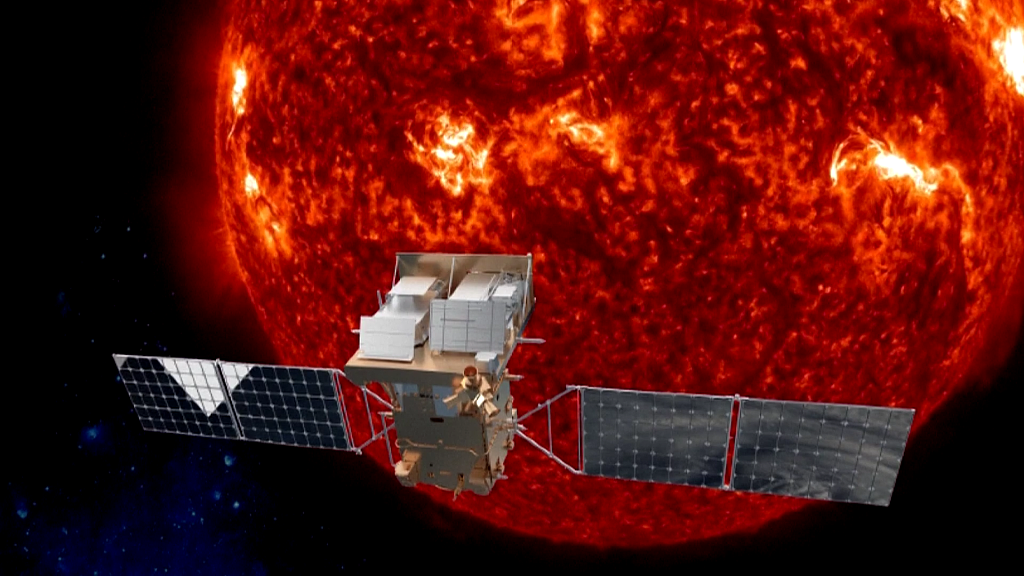
An illustration of the ASO-S. /CFP
An illustration of the ASO-S. /CFP
China's first comprehensive solar probe, the Advanced Space-based Solar Observatory (ASO-S), has been put into scientific observation, according to the Purple Mountain Observatory of the Chinese Academy of Sciences on Monday.
The ASO-S was delivered to the observatory on September 25 after the completion of the summary of in-orbit tests and the beginning of routine observations of payloads.
Dubbed Kuafu-1, the probe has been in orbit for 365 days as of October 9, completing a total of 5,294 orbits around Earth. More than 500 observation plans of various types were submitted. About 120 TB of original data were observed, and over 100 TB of advanced data products were produced.
More than 2 TB of scientific data were downloaded from the probe since it was opened to download on April 12, 2023, said the Purple Mountain Observatory.

The hard X-ray of a C-class solar flare (in squares) captured by China's ASO-S' HXI on November 11, 2022, overlaid on the imaging of the sun's atmosphere, or chromosphere (bottom), observed by NASA's Solar Dynamics Observatory imaged at the same time. /Chinese Academy of Sciences
The hard X-ray of a C-class solar flare (in squares) captured by China's ASO-S' HXI on November 11, 2022, overlaid on the imaging of the sun's atmosphere, or chromosphere (bottom), observed by NASA's Solar Dynamics Observatory imaged at the same time. /Chinese Academy of Sciences
Launched on October 9, 2022, the Kuafu-1 is tasked to simultaneously monitor solar flares, coronal mass ejections and the sun's magnetic field. On December 13, 2022, China released the first batch of images captured by the probe, which verified the observation capability and advancement of the three payloads of Kuafu-1.
During its in-orbit operation, three ground stations in the cities of Sanya, Kashgar and Beijing, far apart from each other, have been receiving data from space, before sending them in packages to a 2,048-core powerful computer mounted at the Purple Mountain Observatory for decoding.
The probe is set to cover the 2024 to 2025 peak of the solar cycle, which normally lasts 11 years.